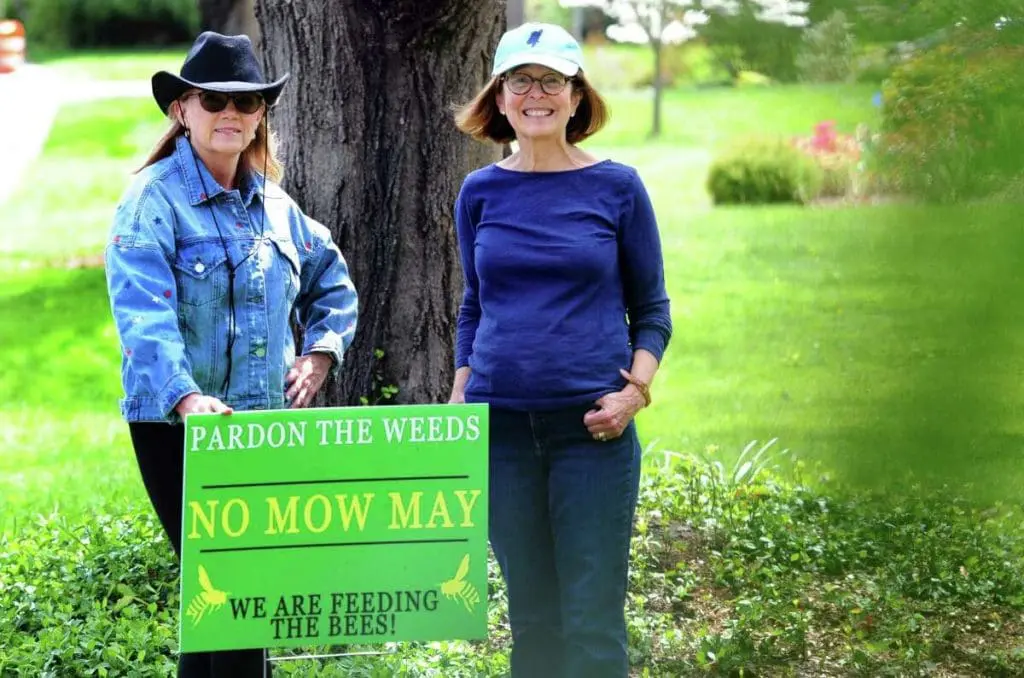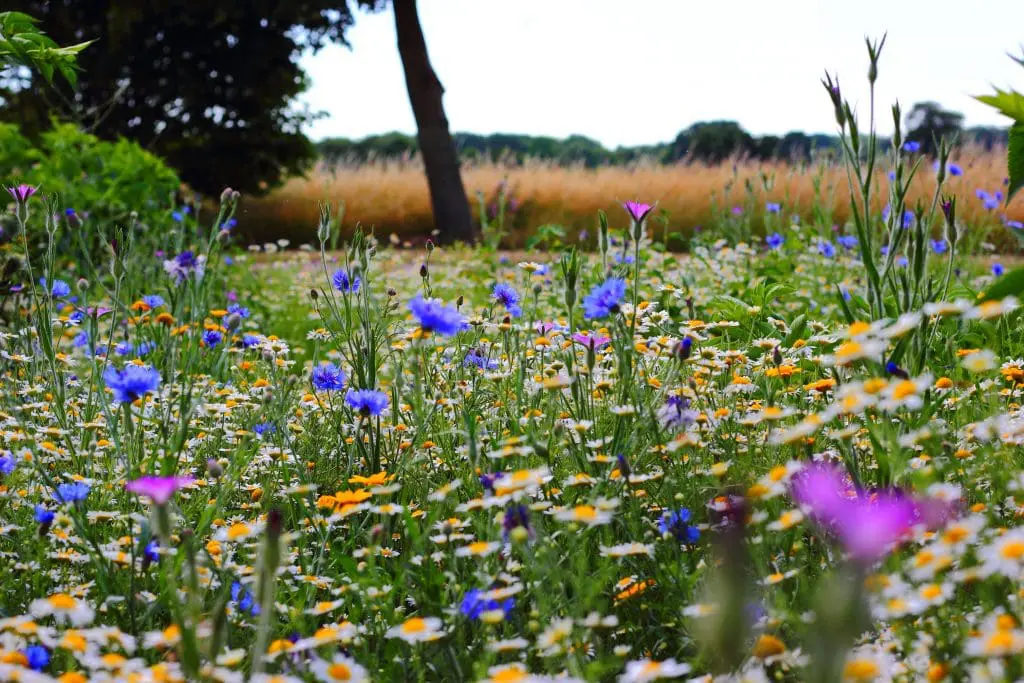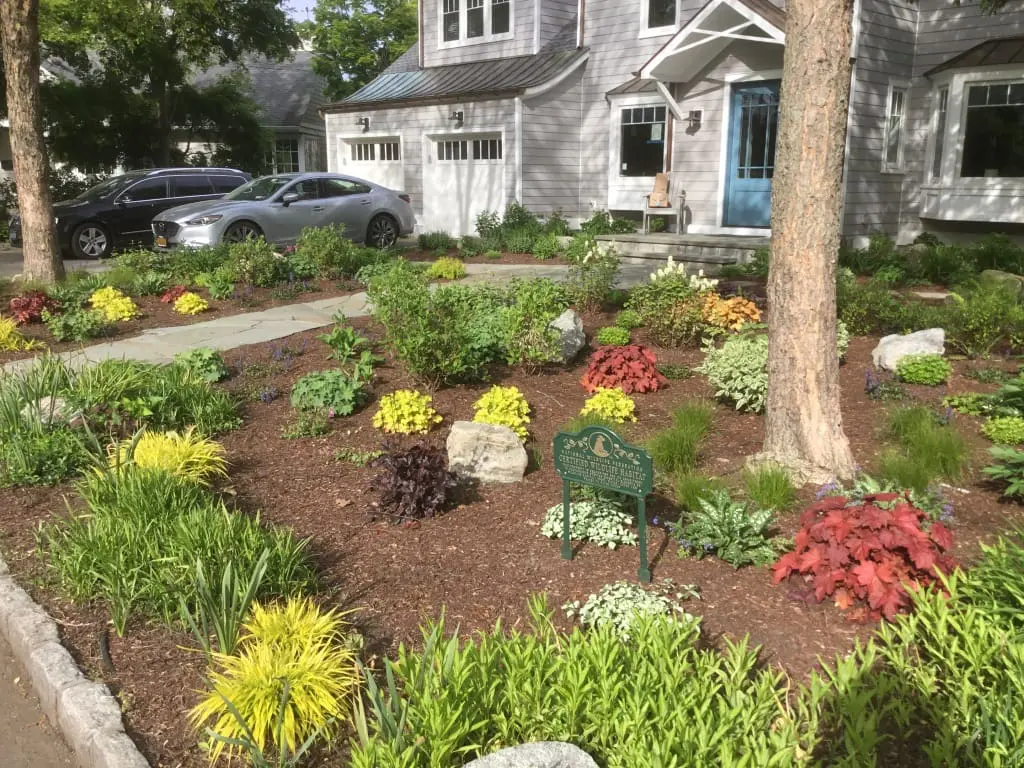In at least five states in the country, a movement to protect native bees by refraining from mowing lawns for the month of May is gaining momentum. The movement started in Britain in 2019, and in Wisconsin in 2020. A New York Times feature this year about Wisconsin’s program brought attention to the matter and several states including in Connecticut adopted their own No Mow May programs. Two researchers at Wisconsin’s Lawrence University studied the lawns of 435 participants and found that the unmowed lawns had three times the number of species and five times the total number of bees as did mowed parks.

No Mow May Benefits
The concept is simple: stop mowing lawns for the entire month of May to allow “weeds” such as dandelion, clover and violet to emerge and provide a food source for bees at a time of year when pollen and nectar sources are limited.
No doubt, there are benefits here. In spring, there are limited native flowering options (compared to summer) and most of the spring flowering landscape plants used in the landscape are not native and also not popular with pollinators. (think forsythia, cherry trees, pear trees, most azaleas, and rhododendrons, nearly all bulbs.) Dandelion and clover are both native to Europe, however they are still often visited by pollinators. Both plants have the added benefit of improving the soil. Dandelions have a deep taproot that brings up minerals from deeper soil strata, improving the A soil horizon for the surrounding plants. Clover is in the pea / legume family and is a nitrogen fixer. There is a native species of violet, Viola soraria or Common Blue Violet. It is a host plant for the Great Spangled Fritillary and a food source for many insects and pollinators.

Not a Historically a Prairie
While this is an admirable grassroots effort, a month-long solution will not initiate meaningful change in our declining bee and insect populations. Insects need habitat and food throughout the growing season (spring – fall) to survive. While these early season lawn weeds are food sources for pollinators, they will not sustain them for the season, particularly if these sources disappear after four weeks.
Also, your lawn is not likely to bounce back to a lush turf after a month of not mowing it. Some turf seeds will have been shaded by taller plants and you will have many patches of “weed” foliage to repair. Be aware that 18” grasses are perfect tick questing habitat, so avoid walking through these areas.
Furthermore, in the Midwest and the the souteast the predominant historical ecosystem was prairies. Much of the seedbank consists of these classic prairies wildflowers and grasses. In the northeast, we are predominantly a forest ecosystem. Untouched landscapes eventually revert to forests.
If you like the concept of No Mow May, consider implementing these principals in conjunction for a more impactful landscape.

Organic First!
While lawns are a resource-intensive monoculture, the core problem is the mainstream use of synthetic fertilizers and pesticides to maintain massive spreads of lawn. If you are using synthetics, your soil is virtually sterile of any soil microbiology. Soil microbes are essential to our health (our gut bacteria evolved alongside it!), the stable storage of CO2 from the atmosphere in the soil, and to thriving plants with strong immune systems. Synthetic lawn chemicals also threaten our waterways and aquatic ecosystems through stormwater runoff. If you are considering making one ecological change in your lawn, taking it organic is far more impactful!

Reduce Your Lawn Area
After going organic, the next most impactful step you can have toward making your lawn more ecological is…reducing the size of it. Yep, we said it. Any and every type of organic garden is more ecologically beneficial than a resource and maintenance-intensive turf monoculture. Biodiversity is critical to a healthy ecosystem that supports many species, both specialists and generalists. Some staggering statistics: one in four native bees are endangered or threatened; 40% of global insect populations are in decline; North American bird populations have declined by 3 billion birds in the last fifty years. These critical species, the foundation of crop pollination and ecosystem food webs, need our help! Consider planting a sunny pollinator garden or a native woodland garden, depending on your site conditions. A rain garden is another excellent replacement for lawn that can help absorb stormwater and provide habitat.
June Lawn Tips
When you do decide to mow again, make sure you are mulch mowing at 3 ½ – 4” high! Mulch mowing returns grass clippings to the soil, reducing the need for fertilizer inputs. Mowingat a greater height encourages more root development, making for a more resilient turf that can access more resources.
Contact us to discuss your landscape design project or schedule a consultation.